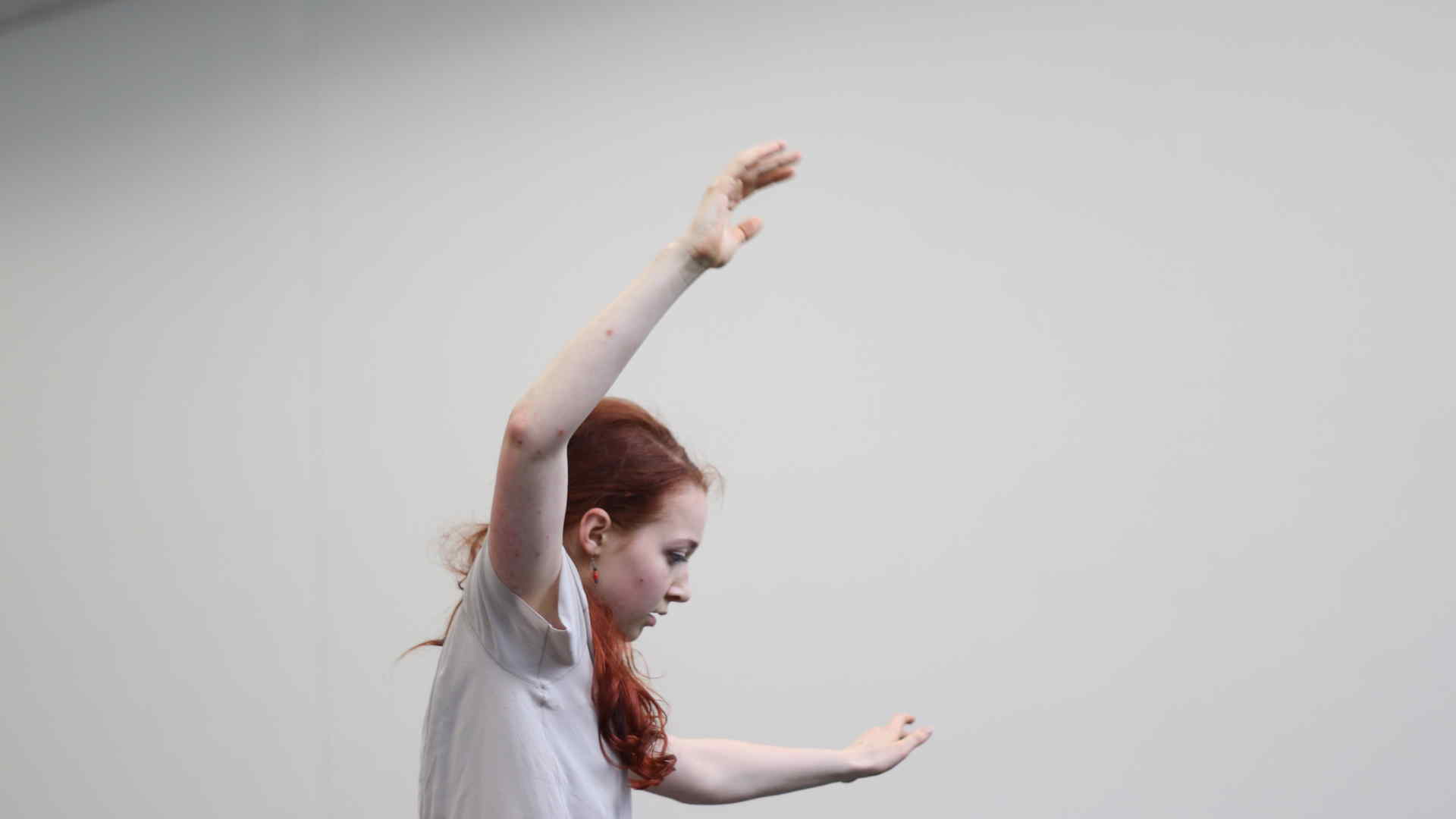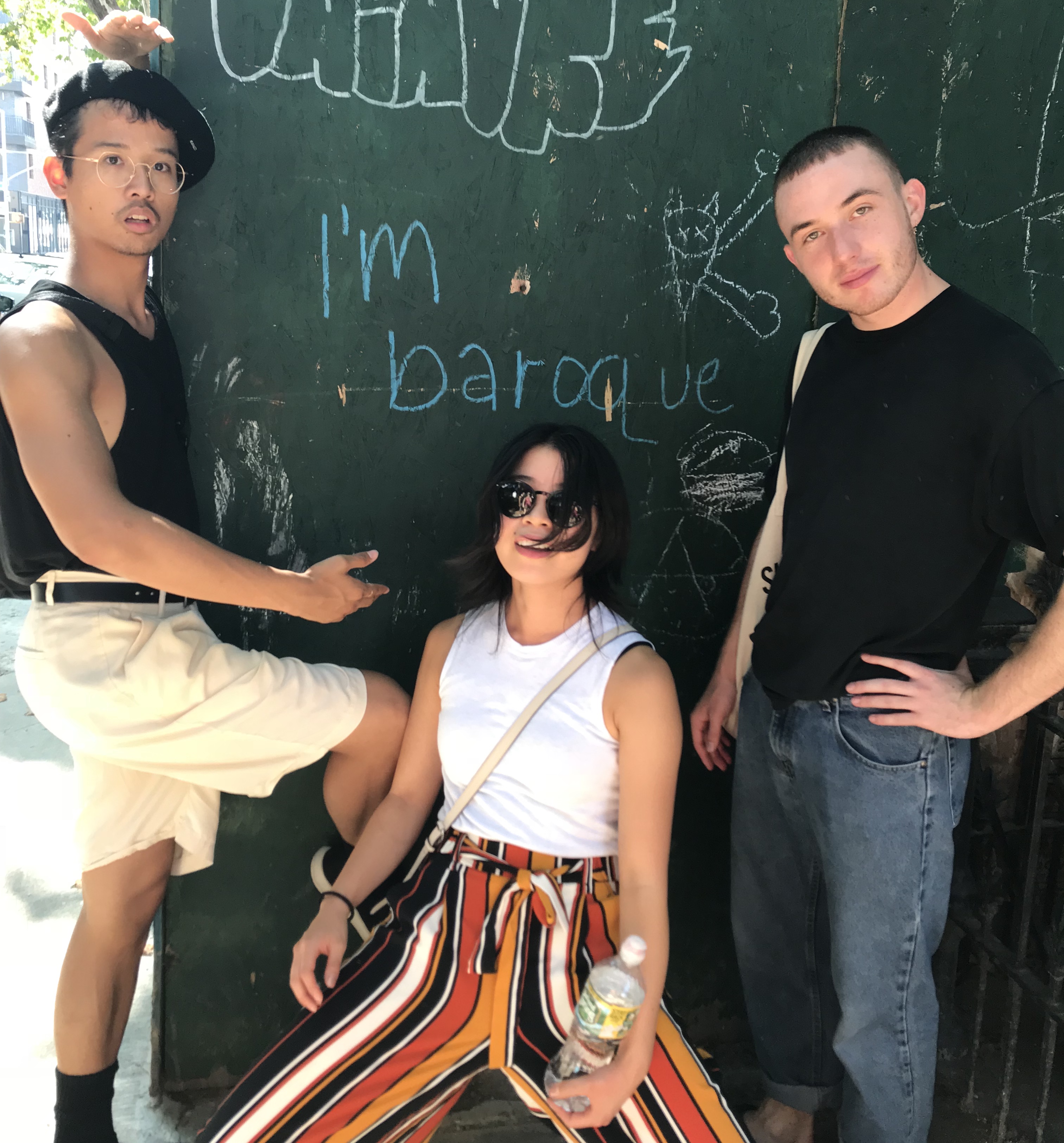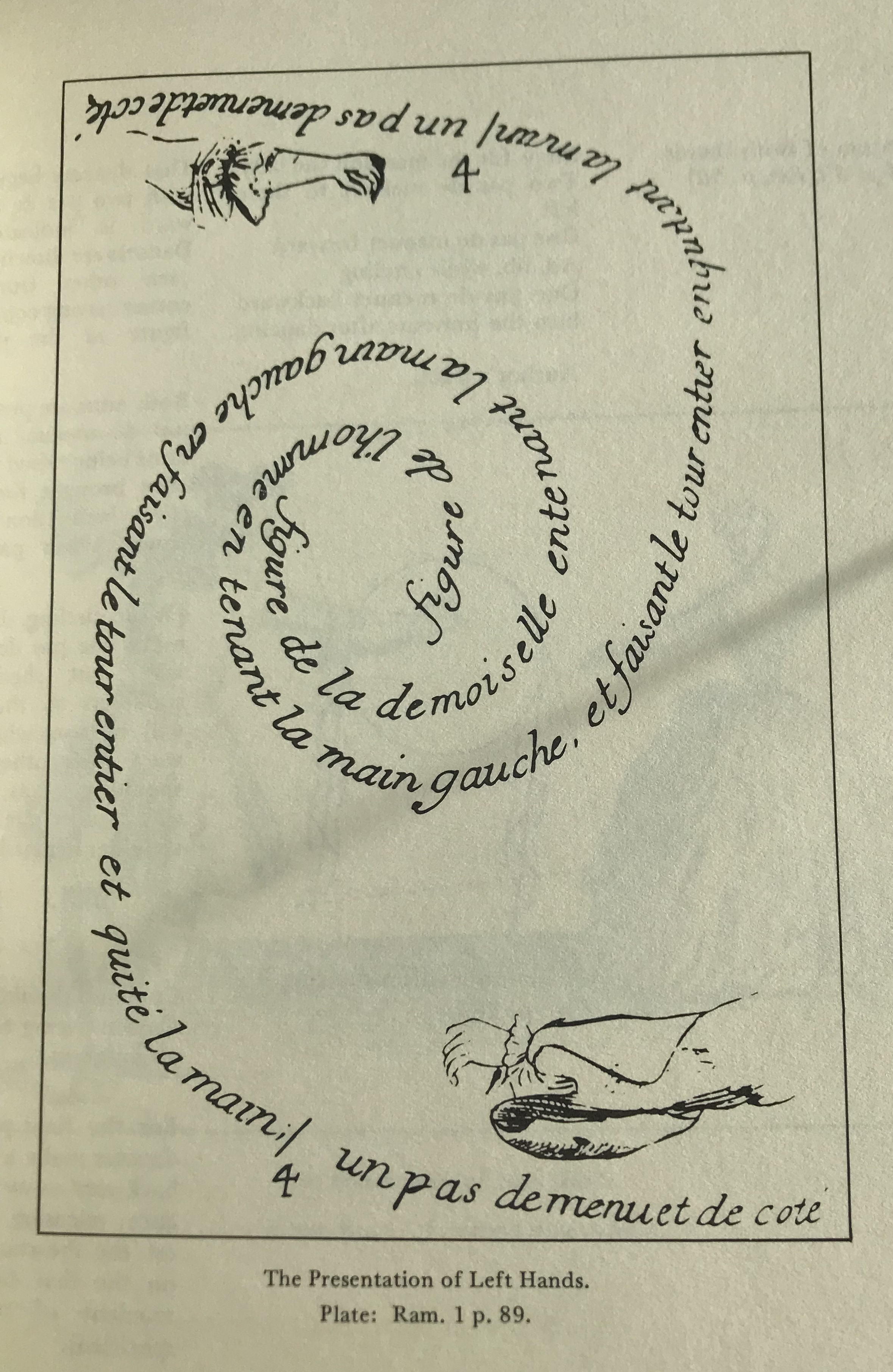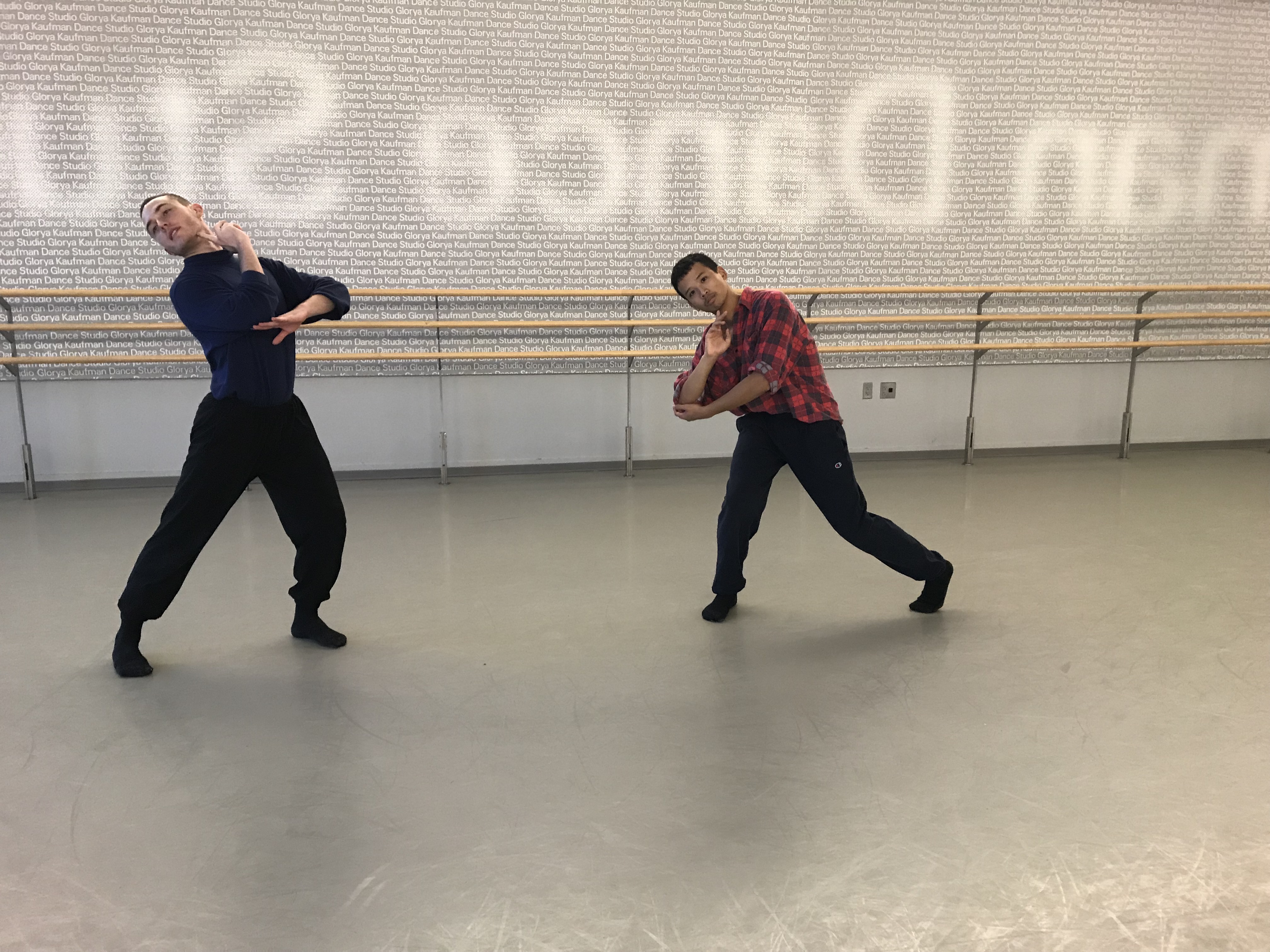
Walking the streets of New York with the music of Jean-Philipe Rameau blasting through my headphones is a thrilling experience.
A warm, almost autumnal day surrounds me, yet my world is full of the strains of past festivities, court dances, and traditions. I’m currently working on a collaboration with Juilliard415, the period-instrument ensemble of the Historical Performance Department. I have a whirlwind three weeks to create 17 minutes of choreography to glorious excerpts of Rameau’s opera dance suites. My piece will be danced in Alice Tully Hall on October 25, along with works by my colleagues Maddie Hanson and Ethan Colangelo. I am excited, nervous, and scattered with ideas. Luckily I am working with four inspiring dancers who are in my class: Matthew, Mio, Chase, and Clarissa are all unique and very ready for the challenge of interpreting Rameau’s music. Just last week we gathered together for the first time to rehearse in the beautiful Kaufman Dance studio, the huge glass windows of which overlook the chaos of Broadway and Columbus Avenue. It's a wonderful place to work because it allows me to feel close to the vibrancy of NYC as well as being an integral part of Juilliard.

The first thing I do when I make dance is read all I can about the subject. Even when I am just exploring an idea I look up images and the root of the word or phrase that I am working with. In the case of Rameau’s dance suites, there is a trove of research to be unearthed. I started by looking into the basis of the opera I was working with, Zoroaster, which is loosely based on the prophet who founded Zoroastrianism, an ancient Persian religion whose main themes are the duality of good and evil. Since Zoroastrianism was a major influence for a portion of the sections I choreographed to, I also referenced Orientalism and the fascination with the other and how those ideas might be manifested in Western court culture. In addition to this rich historical and mythical narrative there were also the subject of Baroque dance and court culture to research.

I totally geeked out over a book that I found in the Banff library. The book compared early dance notations of Feuillet and Rameau. In the 1700s there was a surge of innovation in the realm of court dances and spectacles, which eventually grew into what we know as opera today. Rameau was central to this movement. He strove to notate dance so it could be perfectly matched to the music which he composed. I loved reading the strange instructions for the posture of a dancer,or the ceremonious bows. I was particularly interested in the specific gender roles for men and women and the strict codification of dance steps and ceremonial relations. For instance, Rameau gives the direction that "ladies' steps should not be as bold as the mens''” and that a gentleman must hold himself with a posture where “ the head must be upright without being stiff. The shoulders falling back, which extends the breast, and gives greater grace to the body.” Chase, Clarissa, Matthew, Mio, and I are currently studying the trails of traditional lineage, and we have created our own contemporary take on the kinetic and sonic scores of days past.

Having such a rich palette to draw from is both wonderful and overwhelming. When I finally got into the studio I approached making movement in a collaborative and unfussy way. To put it simply, I trusted the research and just created without much judgment. The editing comes after the canvas is filled out.